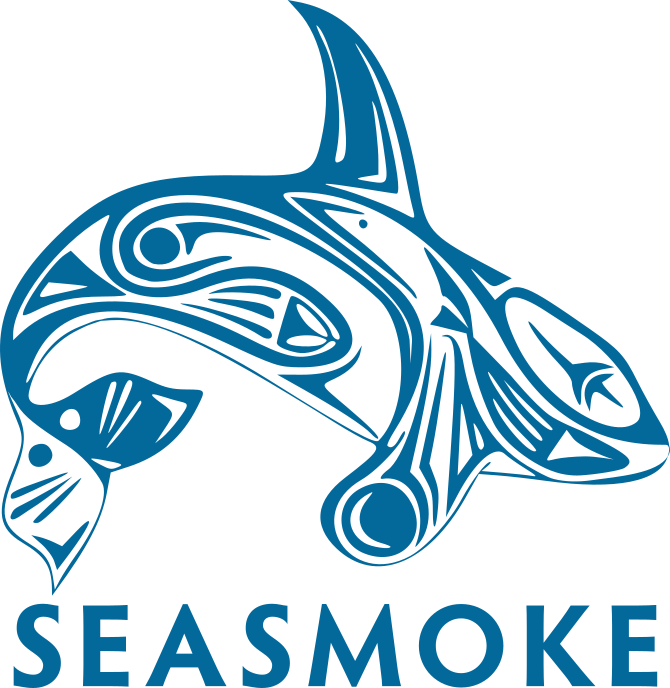






There were numerous pods of orcas in Johnstone Strait today. Early in our tour this morning blows could be seen in the distance along the Hanson Island shoreline in Johnstone Strait and we encountered them moving slowly west near Turn Point, they were the A30’s who were spread out with A38 passing us by, he was in the lead foraging. A50 and her three calves were nearby and we observed them resting, spy-hopping and playing together, rolling over one another especially A72 and her two sibblings and then chasing after A50 as she commenced to forage. With our hydrophone deployed their A-Clan calls were constant and wonderful to listen to and were clearly audible above the water as well. The A24’s were also resting nearby and we observed them interacting together, spy-hopping and tail slapping. Other orcas further east in Johnstone Strait this morning were the A11’s, A23’s, A36’s and A12. Leaving the A24’s we made our way into Blackfish Sound via the Plumper Islands where we sighted the blow of a humpback whale that was feeding at the top end of Blackfish Sound. It was fabulous to watch as the whale surfaced and dived and while we were observing it, more orcas could be seen traveling in off Donegal Head. It was exciting indeed to watch as more and more orcas became visible passing in close to the kelp forests as they rounded Donegal Head. The orcas were traveling in their matriline groups and we identified them as the I15’s and although the matrilines (I16, I27’s, I4’s, I65’s) were swimming separate from each other by a short distance, because they still travel together they have retained the matriline name of their mother I15 who died 5-6 years ago. We listened briefly to their G-Clan calls which sounded very different to those of the A-Clan orcas we had heard earlier. As we were leaving the orcas as they made their way towards Weynton Passage a second humpback whale was sighted. It was a superb day for viewing. Other sightings included: dalls porpoises, harbour seals, rhinoceros auklets, herring, california, bonaparte, glaucous-winged and mew gulls, pigeon guillemots, common murres, bald eagles and belted kingfishers.
